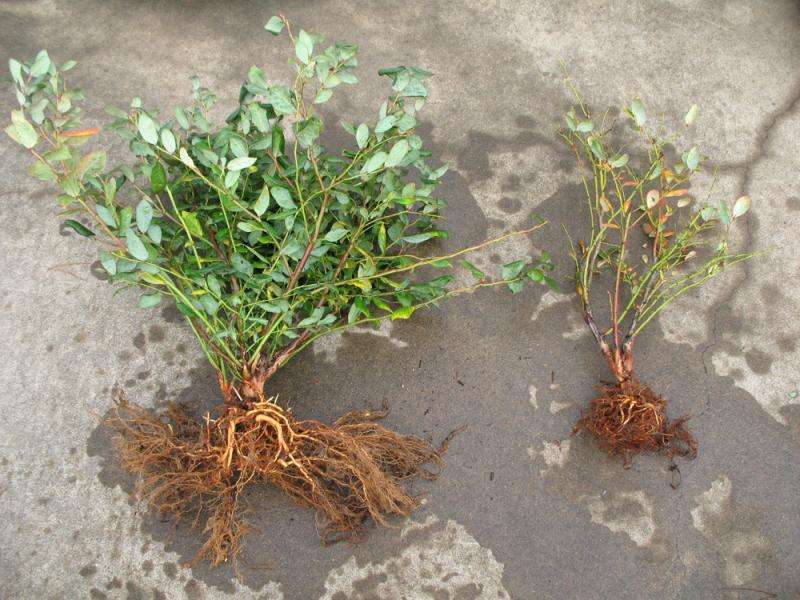Blueberry types identified for resistance, susceptibility to pathogen

Phytophthora cinnamomi is a soilborne pathogen associated with root rot in many woody perennial plants. An extensive study from researchers in Oregon has identified a number of highbush blueberry cultivars that show resistance to the disease, as well as those varieties that are susceptible.
According to authors John Yeo, Jerry Weiland, Dan Sullivan, and David Bryla, whose study appeared in January 2016 issue of HortScience, Phytophthora cinnamomi is a ubiquitous pathogen in blueberry production. Symptoms of infection can include poor shoot growth, root necrosis and dieback, yellowing or reddening leaves, and, in the most severe cases, dead canes and branches, and plant death. Phytophthora cinnamomi infection is more prevalent in plants treated with drip irrigation rather than sprinklers, and is most common in heavy soils and poorly drained sites.
The authors conducted two experiments: one with 10 commercially established highbush blueberry cultivars, and the other with seven newly released cultivars, three commercially established cultivars, and three advanced selections. They identified four commercially established cultivars ('Aurora', 'Legacy', 'Liberty', and 'Reka'), and two new cultivars ('Overtime' and 'Clockwork') as the most resistant to Phytophthora cinnamomi. "When these genotypes were inoculated (with Phytophthora cinnamomi), average relative shoot biomass was equal to or greater than 60% of that of the noninoculated plants, whereas relative root biomass was equal to or greater than 40%," the authors said. "Despite cultivar differences in growth, the root and shoot biomass of healthy, noninoculated cultivars was not positively correlated with disease resistance, indicating that the more vigorous cultivars (i.e., those with greater biomass) were not necessarily those that were more resistant to the disease."
Results showed that relative shoot biomass of the susceptible genotypes, on the other hand, ranged from 19% to 53%, while relative root biomass ranged from 11% to 26%. The susceptible genotypes included 'Bluetta', 'Bluecrop', 'Bluegold', 'Blue Ribbon', 'Cargo', 'Draper', 'Duke', 'Elliott', 'Last Call', 'Top Shelf', and 'Ventura'. "Growers should avoid planting these cultivars on sites where the soil conditions are conducive to root rot (e.g., heavy soils and/or poor drainage)," the authors said.
The authors concluded that genetic resistance is a "promising tool" for minimizing economic losses caused by Phytophthora root rot.
More information: hortsci.ashspublications.org/c … ent/51/1/74.abstract
Journal information: HortScience
Provided by American Society for Horticultural Science

















